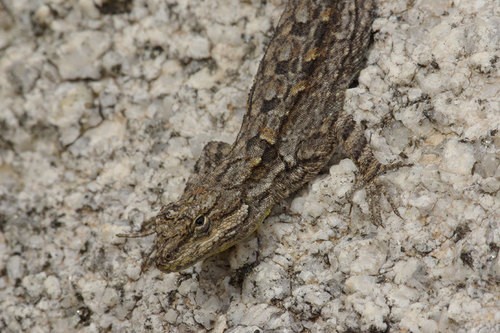Urosaurus ornatus schottii
A species of Tree lizards Scientific name : Urosaurus ornatus schottii Genus : Tree lizards
Urosaurus ornatus schottii, A species of Tree lizards
Scientific name: Urosaurus ornatus schottii
Genus: Tree lizards
Content
Description General Info
 Photo By sullivanribbit , used under CC-BY-NC-4.0 /Cropped and compressed from original
Photo By sullivanribbit , used under CC-BY-NC-4.0 /Cropped and compressed from original Description
Urosaurus ornatus schottii adapts well in rocky desert environments, where it adopts cryptic behavior to escape predators. An interesting feature is its temperature regulation method, relying on high frequency physical movements to cool. This species exhibits a territorial display of push-ups and tail arches, signifying its unique social interaction ability.
General Info
Lifespan
4-8 years
Diet
Urosaurus ornatus schottii predominantly feeds on a variety of arthropods, often consuming ants, beetles, and spiders. This species prefers to forage at ground level but is also adept at climbing to acquire food hidden in vegetation.
Appearance
Urosaurus ornatus schottii is a modest-sized lizard with a slender body and smooth, scaly skin notable for its intricate patterning. It displays general greyish-brown coloration, but is adorned with prominent chevron patterns of a darker hue on its back. It has a relatively long tail which pairs with the slender body. Remarkably, males of the species develop blue patches on their bellies and throats during the breeding season.
Behavior
Urosaurus ornatus schottii is a diurnal, arboreal reptile, noted for its sun basking habits. The species frequently shifts position for optimum heat absorption and to evade predators. Urosaurus ornatus schottii courts females by bobbing their heads and vibrating their brightly colored bodies, marking an unusually vibrant sexual display for a reptile. This species is territorial, defending prime basking spots from rivals.
Scientific Classification
Phylum
Chordates Class
Reptiles Order
Lizards and snakes Family
North american spiny lizards Genus
Tree lizards Species
Urosaurus ornatus schottii